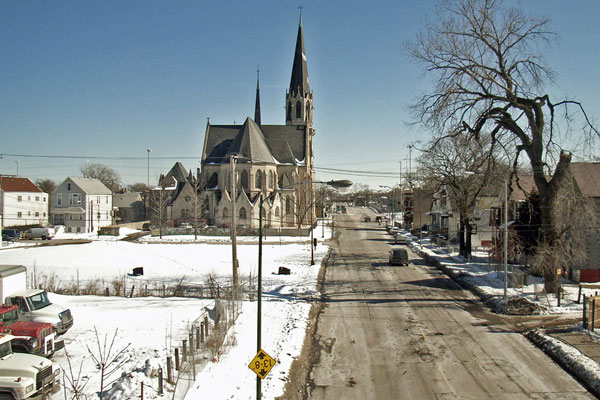
One of the flashpoints of the ongoing economic crisis has been the attention cast on income disparity in the United States—between the wealthy and the well-off, the well-off and the middle-class, and the middle-class and the poor. You can’t kick a rock without hitting some sort of related metric, be it changes in CEO pay versus worker pay, income inequality in developing countries compared to the U.S., net worth by race, and so forth.
What I haven’t seen as much of is looking at inequality within, instead of between, demographics. Which is why I was heartened to see Salim Muwakkil’s "Black Chicago Divided," the first in a five-part In These Times series called "The Other Chicago." It touches on unemployment, incarceration, flash mobs, gentrification, and the cultural differences that originate in class differences, within the African-American communities on the city’s south and west sides:
The statistics that tell of historically high levels of education, of college attendance doubling over the last 25 years are real, as are those detailing huge increases in the prison inmate population. A Dickensian division into best of times, worst of times, applies perfectly to the black community circa 2011—albeit, the Great Recession is steadily eroding historic successes.
It’s an excellent piece, exploring as it does how a phenomenon that cuts across races and regions manifests itself locally, and I’m looking forward to the subsequent pieces.
Related: Jared Bernstein, the former economic adviser to Joe Biden, has a chart from the Pew Research Center showing the change in median household net worth by race from 2005 to 2009. The disparity between races is obviously striking, but the disparity in change over that short period is just as striking even if it’s lost in the way the bar chart is displayed. Bernstein cites the collapse of the housing bubble as the likely culprit, which seems likely, given the percentage of net worth home ownership represents for all but the wealthy.
For many middle-class households, and especially for minorities, their main asset is not their stock or bond portfolios…it’s their home. And when its value plummets—or when they lose it—well, the result is in the chart below.
[snip]
Surely, some of that wealth, I’d guess a non-trivial share, was a result of the bubble itself, along with the financial practices, like bad underwriting, that inflated it. But there’s no getting around that this is a major backslide for minority households, and it will take years, if not decades, for them to climb back.
It certainly tracks with what I’ve been reading about the housing crisis on the south side.
Update: Micah Maidenberg of the Chicago Reporter reports from a special legislative hearing on employment called by LaShawn Ford.
Photograph: Payton Chung (CC by 2.0)


